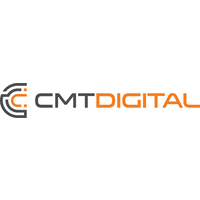
The blockchain for open worlds
FLOW price live chart

Download Flow wallet app
Store & Transfer FLOW safely
Monitor your FLOW balance in USD
Receive FLOW in ETH network
Send Flow by mobile phone number with 0% fee
FLOW wallet mobile app for iOS and Android
Flow basics
Flow
Infrastructure
Flow is a blockchain created by Dapper Labs that aims to make it easy for developers to build decentralized applications and businesses. Flow uses a multi-role architecture design to scale the network instead of sharding. One of the fundamental reasons Dapper Labs opted to shift away from Ethereum and build its own general-purpose blockchain was to avoid the complexity of sharding. Flow asserts that its scaling-without-sharding strategy will improve network speed and throughput while preserving composability standards and a developer-friendly, ACID-compliant environment.
Flow token type
FLOW
Native
Work, Payments
The FLOW token is the blockchain native token required for staking on the platform, as well as the currency in which staking rewards are paid. In addition, small amounts of FLOW token are required to pay transaction fees and a minimum reserved balance is required to pay for storage on the network.
Flow is a proof-of-stake system, so operations of the validator nodes require FLOW tokens. The tokens will have multiple uses, including:
- Staking
- Staking rewards
- Gas/Transaction fees
- Account storage deposits
- Collateral for stablecoin and other third party defi products
- Participation in future protocol governance and ecosystem development
Flow history and first price
Private Sale, Crowdsale
Dapper Labs was founded in 2018 and is based in Vancouver, BC.
As of Fall 2019, the team at Dapper Labs has been building the production version of the Flow network. This includes complete implementations of protocol logic for each of the various node types, integration of the Hot Stuff consensus algorithm, and implementation of the various crypto libraries and signatures the protocol requires. The team released the Flow Beta Mainnet in May which supports production user experiences for us and its partners.
For Beta Mainnet the native token (FLOW) existed on the network to instantiate user accounts and provide a minimal balance for user to conduct their first transactions. All fees were a small nominal amount at this stage. Future development will include integration of epochs (the ability for new nodes to join and leave the protocol), full challenge arbitration by the consensus nodes, performance improvements to the protocol, and upgrades to the programming language (Cadence).
Emulator software released to allow the development of smart contracts without access to a full network instance. Used by Dapper Labs to start development of NBA Top Shot.
Complete transaction cycle processed by a single instance of each node
Onboarding developers to Cadence via hosted hackathon
Multiple nodes of each role allowing simple transactions to go on a complete round trip through the network
Complete consensus and execution environment (without slashing)
Beta Mainnet hosting smart contracts/dapps in production with real user data, starting with the NBA collectible experience and associated NFTs.
The FLOW token is minted and held by Dapper Labs pending distribution to pre-launch investors and a Community Sale on CoinList.
The full node implementation is publicly published under an open-source license.
Node operators are required to stake a number of tokens in order to participate in the network and earn rewards. Token holders can delegate to specific operators to earn a share of rewards. The Slashing Rate is set to 0% until the Slashing mechanisms have been tested for false positives.
Flow technology explained
There are four pillars at the foundation of the Flow blockchain:
- Multi-role architecture
- Resource-oriented programming
- Developer ergonomics
- Consumer onboarding
Multi-role architecture Flow’s design is unique, allowing the network to scale to serve billions of users without sharding or reducing the decentralization of consensus. Flow pipelines the work of a blockchain miner or validator across four different roles that all require staking; a separation of concerns that significantly reduces redundant effort. Epochs will reflect the plans outlined in this document - Incentives in a Multi-Role Blockchain while challenge arbitration will in Flow is described in this technical paper - Execution Verification.
Resource-oriented programming Smart contracts on Flow are written in Cadence, a new programming language for cryptoassets and apps that builds on the concepts of resource-oriented programming which prioritizes ease of use for developers. Using Cadence, developers will be able to create unique and durable digital artifacts where ownership is tracked by the language itself. Flow envisions that this design will enable a powerful new category of applications. Developers can try Cadence on the Flow Playground.
Developer ergonomics Flow includes a number of features informed by Dapper Labs’ experience building some of the most used dapps of all time, including CryptoKitties. For example, Flow enables upgradeable smart contracts to allow developers to deploy smart contracts to the mainnet in a “beta state”, where the code can be incrementally updated by the original authors. Users will be alerted to the unfinished nature of this code, and can choose to wait until the code is finalized before interacting with it. Once authors are confident that their code is safe, they can irrevocably release their control on the contract, and then remains immutable on the Flow blockchain for all time. This balances the best-practices of product development (early iteration and refinement) with the smart contract benefits of trustless, immortal code.
Consumer onboarding The native account model on Flow is designed to provide a series of benefits to improve the experience for all users, from rank beginners to seasoned experts. For example, there are hooks built into the protocol to allow account recovery flows for users who lose their keys and optional multi-sig support with the ability to frequently cycle keys for advanced use cases.
General Tech stack overview The entirety of the node software is currently written in the Go programming language. This includes basic storage (BadgerDB), networking (libp2p), consensus algorithm (self implemented HotStuff), execution storage (self implemented binary Merkle tree), execution environment (Cadence) and all supporting components.
The codebase is generally split into sections related to each of the roles: Access, Collection, Consensus, Execution and Verification, with the exception being shared components, such as caching, networking and cryptography.
The Flow blockchain programming language, Cadence lives in a separate repo and is maintained separately.






























Flow supply limit
Inflationary
Dynamic Emission
Short Term The Flow blockchain will have an initial bootstrapping phase to create the initial circulating supply for the network through staking rewards paid to anyone willing to lock their FLOW token and participate in the network. During the bootstrapping phase there will be around 7.2% monetary inflation. Staking rewards begin accruing after November 2, 2020 and are paid out every epoch (approximately weekly).
Long Term New issuance on Flow is used for staking rewards in cases when transaction fees are not sufficient to compensate delegators and validator node operators. On or before December 15, 2020, the total new issuance rate across the network is capped at 5% per year. This cap will go down to 3% after June 1, 2022. New issuance “tops up” the transaction fees to a minimum guaranteed income for node operators. If fees cover the income guarantees, new issuance goes to 0. Therefore, as the Flow blockchain gains adoption and fees increase, the issuance should eventually remain at zero while fees make up a majority of network rewards.”
Note: There is an additional 250 million FLOW tokens, half of which will be held in the foundation reserve for staking and delegation only while the other half is intended as collateral subsidies to secondary protocols. As a result of the intended lockup, these tokens are not reflected in the circulating supply.










































Flow consensus
Proof-of-Stake
HotStuff
0.02 min
Flow governance
Upcoming
The Flow Blockchain is governed in a progressively decentralized manner in which no single party carries an outsized influence over the direction of the network. The Flow Ecosystem makes decisions that affect the Flow Blockchain’s technical core protocol, which will follow a path similar to generally accepted open-source development practices:
- Users may submit proposals for modifying the Flow Blockchain to the Flow GitHub repository. The Flow GitHub repository is currently under the control of the Core Team.
- Members of the Flow Ecosystem discuss a submitted proposal; during this process, anyone may propose modifications to the originally submitted proposal
- Eventually, it is determined whether there is community consensus to implement a given proposal
- If and once community consensus forms around a proposal, the Core Team authorizes and implements the changes in a set of compatible protocol definitions and software implementations so they can be deployed by Validators maintaining the Flow Blockchain. The Validators choose which Protocol Version to use.
Store Flow with Cropty cryptocurrency wallet by 3 simple steps:
- Download the app from the Apple AppStore or Google Play, or open your browser wallet.
- Create your Cropty wallet account with Face ID or Touch ID security options.
- Transfer FLOW from external wallet.
Receive Flow to your Cropty wallet by QR-code, phone number, e-mail and nickname:
- Download the app from the Apple AppStore or Google Play, or open your browser wallet.
- Create your Cropty wallet account, set up a nickname.
- Click ‘Receive’ and follow the instructions.
You can transfer your Flow holdings and store it safely with Cropty wallet. Cropty secures safety of your holdings through various verification options like using password, authenticator app, Face ID, Touch ID and backup codes. You can be sure no one can get access to you Flow holding except you.
Start investing in Flow with Cropty cryptocurrency wallet by 3 simple steps:
- Download the app from the Apple AppStore or Google Play, or open your browser wallet.
- Create your Cropty wallet account, set your authentication settings.
- Transfer FLOW from external wallet.
The Cropty wallet provides the most convenient application for storing and transfering Flow. Cropty targets to become one the best crypto wallets for Android and iOS in 2025. Cropty provides convenient application and secure custodial services, built for crypto beginners, as well as for crypto-savvies.
You can receive Flow donations instantly with Cropty wallet. Download Android or iOS app or open the web version, sign up, click ‘Receive’ and follow simple instructions. Share your address with someone who wants to donate you in crypto.
You can receive Flow donations instantly with Cropty wallet. Download Android or iOS app or open the web version, sign up, click ‘Receive’ and follow simple instructions. Share your address with someone who wants to donate you in crypto.
You can send Flow instantly without fee in the Cropty wallet. Download Android or iOS app or open the web version, sign up, click ‘Send’, choose ‘Send via e-mail, phone number or nickname’ and follow simple instructions.
- Sign up to Flow wallet.
- Top up your balance with Flow.
- Store, trade or deposit your Flow.
- Get Flow deposit interest directly to your Cropty wallet.










